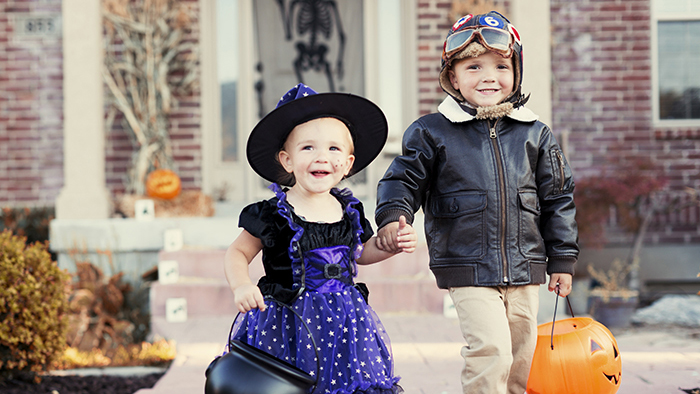Tips for a safe Halloween
October 10, 2023
Halloween is an exciting time of year for children – dressing up in creative costumes, carving pumpkins and gathering lots of sweets. But while it can be an enjoyable experience, it isn’t without preventable, safety risks.
A lot of the Halloween general warnings focus on candy safety, but a bigger risk to kids now comes from the traffic on the street. Additionally, candy should still be checked for food allergies or choking hazards for smaller children, and parents are encouraged to ration the candy, so kids aren’t eating it all in one night.
According to Safe Kids Worldwide, on average, children are more than twice as likely to be struck by a car on Halloween than on any other day of the year. To help kids stay safe during trick-or-treating, here are some tips for parents from the National Safety Council (NSC):
- Fasten reflective tape to children’s costumes and bags or give them glow sticks or a flashlight to carry.
- Accompany young children (12 and under) on their trick-or-treating rounds in the neighborhood.
- If your older children are going alone, plan and review a route acceptable to you and agree on a specific time they should return home.
- Instruct children to travel only in familiar, well-lit areas and stick with their friends.
- Teach your children never to enter a stranger's home or car.
- Children and adults alike should put electronic devices down, keep heads up and walk (not run) across the street only at corners or crosswalks.
- Tell your children not to eat any treats until they return home so that you can check the candy to make sure it is wrapped as well as help avoid any food allergies.
Drivers who are out and about on Halloween night need to be cautious and watch for children walking on roadways, medians and curbs. Particularly, drivers should enter and exit driveways and alleys slowly and carefully and keep an eye out for children in dark clothing at twilight and later in the evening. The NSC also suggests that any new, inexperienced drivers should be discouraged from driving when trick-or-treating is occurring in the community.
For those staying home and handing out treats, the American Academy of Pediatrics (AAP) has the following tips to ensure a safe environment for trick-or-treaters:
- Remove tripping hazards to keep your home safe for visiting trick-or-treaters. Keep the porch and front yard clear of anything a child could trip over such as garden hoses, toys, bikes and lawn decorations.
- Check outdoor lights and replace burned-out bulbs to ensure good visibility.
- Sweep wet leaves from sidewalks and steps to prevent anyone from slipping on them.
- Keep your pets in another room when you are expecting trick-or-treaters.
Finally, when it comes to the tradition of pumpkin carving, don’t allow small children to carve pumpkins with sharp utensils. Instead, they should draw a face with markers. Candlelit pumpkins should be placed on a sturdy table, away from curtains and other flammable objects and never be left unattended. Do not place candlelit pumpkins or decorations on a porch or any path where visitors may pass close by. A safer option is to use an electric candle, flashlight or glow stick to light the pumpkin.
By following these tips, you can help ensure your family has a safe and Happy Halloween. For more information, visit https://www.nsc.org/halloween.
